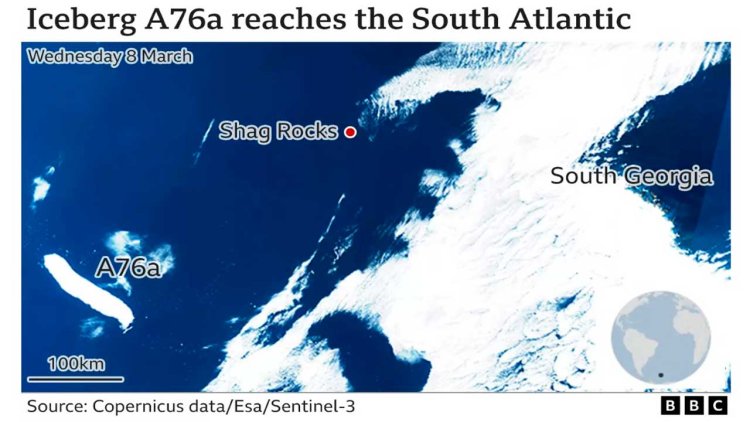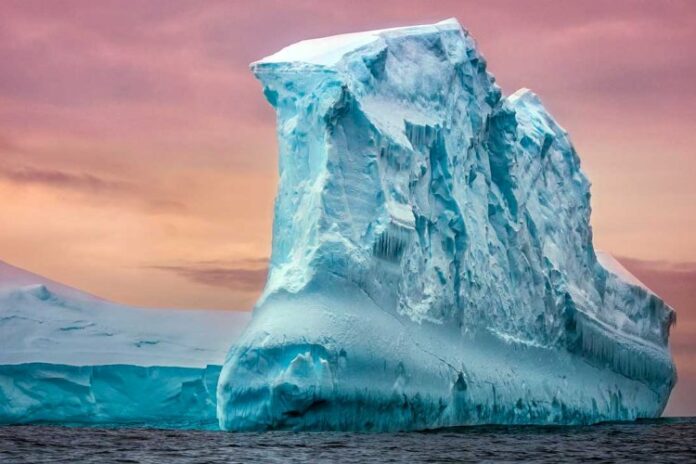British scientists are tracking two enormous icebergs that broke off from Antarctica and could intrude on shipping lanes.
The smaller of the icebergs is called A81 and it’s bigger than Greater London, according to BBC. Its larger travel companion is called A76a.
The Royal Research Ship Discovery inspected the latter berg as it entered the southern Atlantic Ocean.
“It was directly in our path as we sailed home so we took 24 hours out to go around it,” British oceanographer Geraint Tarling told the BBC. It’s slowly approaching the Falkland Islands, which are a British territory. Researchers’ biggest concern is that A76a would get grounded and further break into smaller pieces that could obstruct shipping and fishing operations.
NASA said in October that a chunk of ice that broke from the world’s largest iceberg, A76, was floating in the Drake Passage off of Cape Horn, Chile. Such icebergs typically melt as they enter warmer waters near the equator.

A81 broke off Antarctica’s Brunt Ice Shelf in February after being weakly tethered to the mainland for years, according to The British Antarctic Survey.
It’s expected to follow A76a’s path and also poses potential inconveniences to ships. Researchers flying from the United Kingdom’s Halley VI Research Station recently photographed the small portion of the iceberg that could be seen above water.
Both icebergs—up to 90% of which are underwater—could weigh a trillion tons, the BBC reports.
While icebergs can be disruptive, they also bring fresh water to sea life as their frozen surfaces melt.



